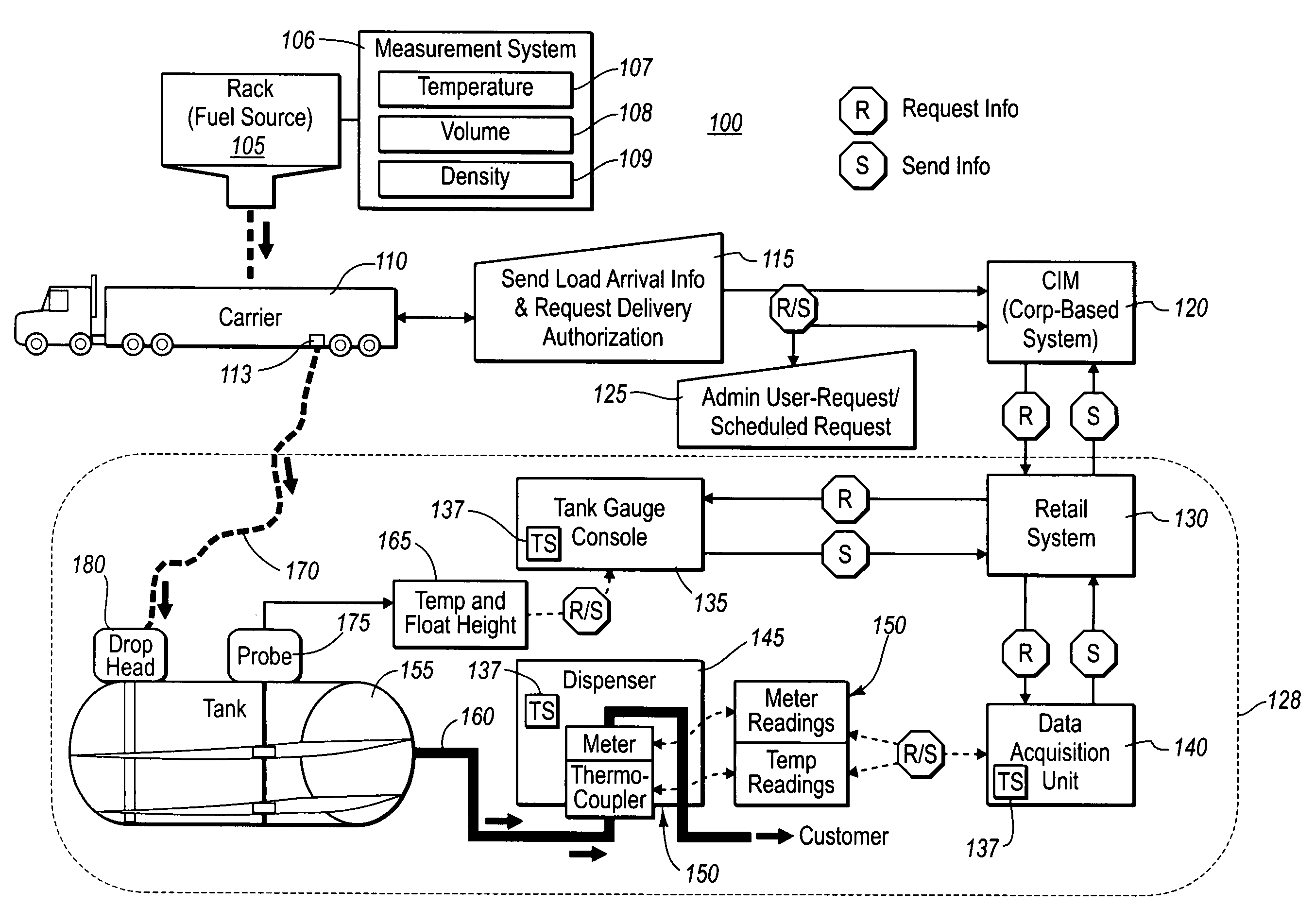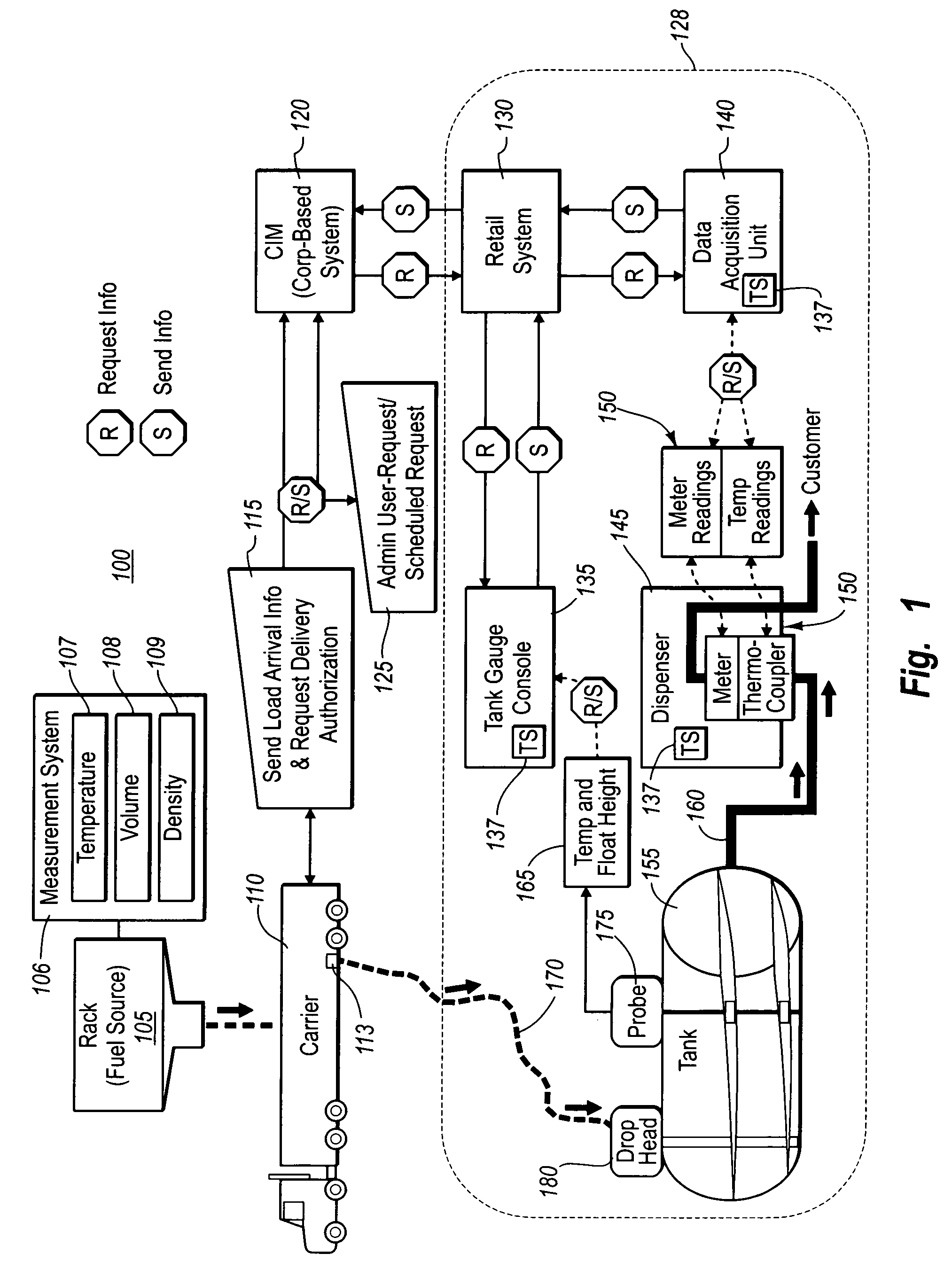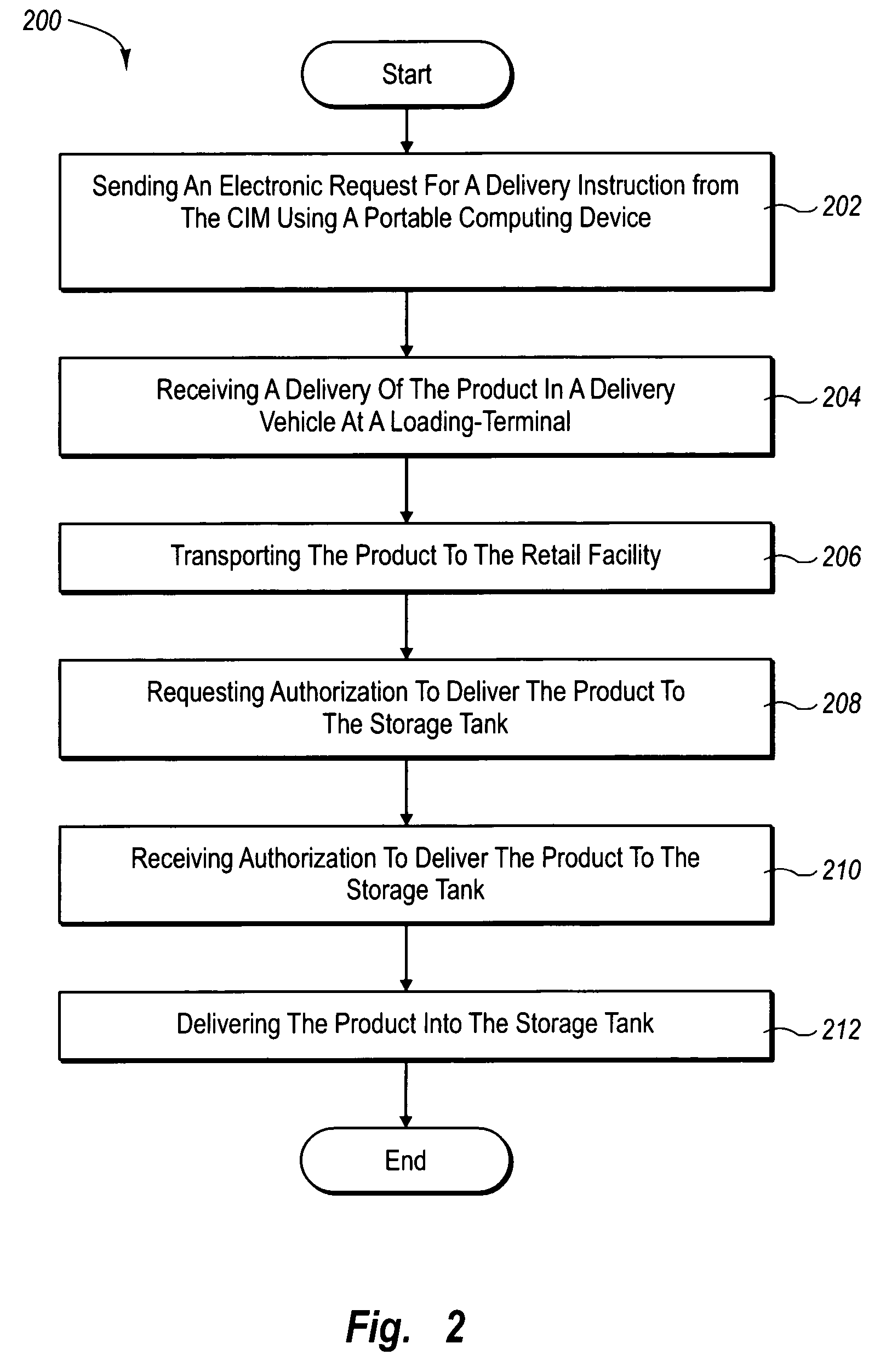Performing an on-demand book balance to physical balance reconciliation process for liquid product
a liquid product and book balance technology, applied in the field of liquid product book balance to physical balance reconciliation process, can solve the problems of inability to provide real-time monitoring of the delivery of liquid products for accurate inventory, large burden on the owner, and customer inconvenien
- Summary
- Abstract
- Description
- Claims
- Application Information
AI Technical Summary
Benefits of technology
Problems solved by technology
Method used
Image
Examples
Embodiment Construction
[0013]Embodiments of the present inventions overcome these problems by providing various methods, systems, computer program products and devices. In one configuration, the present invention can include systems and methods for the central control and monitoring of product delivery based on anticipation of delivery through a request and authorization of product drop process. Prior to delivery of a product, the driver requests and receives authorization from a centralized service, such as a corporate based Centralized Inventory Management system, or CIM, sending authorization data to the driver and / or the retail facility to receive the liquid product. The driver can provide the CIM with information on a bill-of-lading. The driver can also provide additional information such as the supplier, the fuel source where the product was loaded, the carrier, driver's information, etc. In some embodiments, the driver can provide all of this information electronically using a portable computing de...
PUM
| Property | Measurement | Unit |
|---|---|---|
| time | aaaaa | aaaaa |
| time | aaaaa | aaaaa |
| temperature | aaaaa | aaaaa |
Abstract
Description
Claims
Application Information
 Login to View More
Login to View More - R&D
- Intellectual Property
- Life Sciences
- Materials
- Tech Scout
- Unparalleled Data Quality
- Higher Quality Content
- 60% Fewer Hallucinations
Browse by: Latest US Patents, China's latest patents, Technical Efficacy Thesaurus, Application Domain, Technology Topic, Popular Technical Reports.
© 2025 PatSnap. All rights reserved.Legal|Privacy policy|Modern Slavery Act Transparency Statement|Sitemap|About US| Contact US: help@patsnap.com



